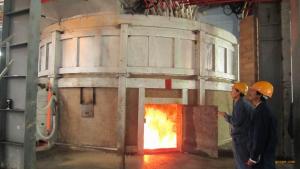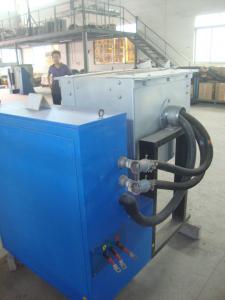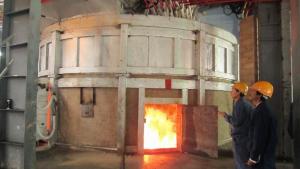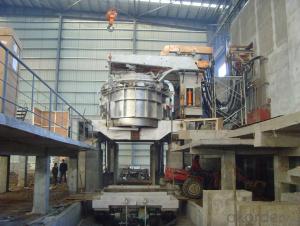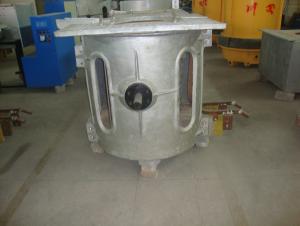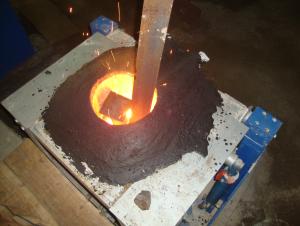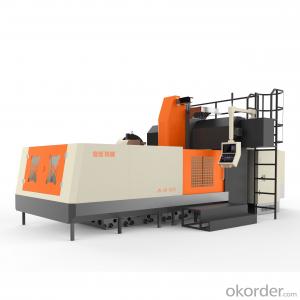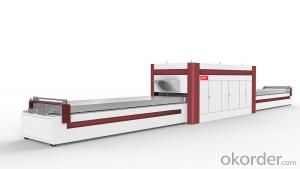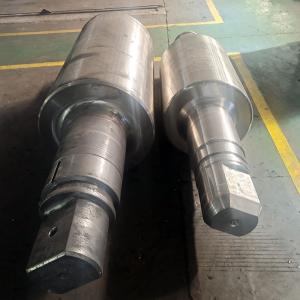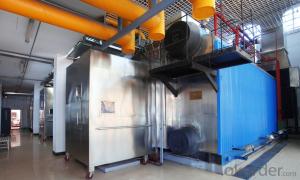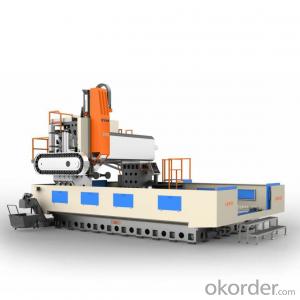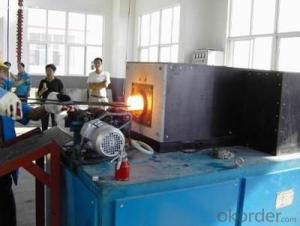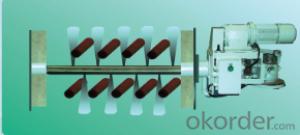Silicon-manganese Furnace
- Loading Port:
- China Main Port
- Payment Terms:
- TT OR LC
- Min Order Qty:
- -
- Supply Capability:
- -
OKorder Service Pledge
OKorder Financial Service
You Might Also Like
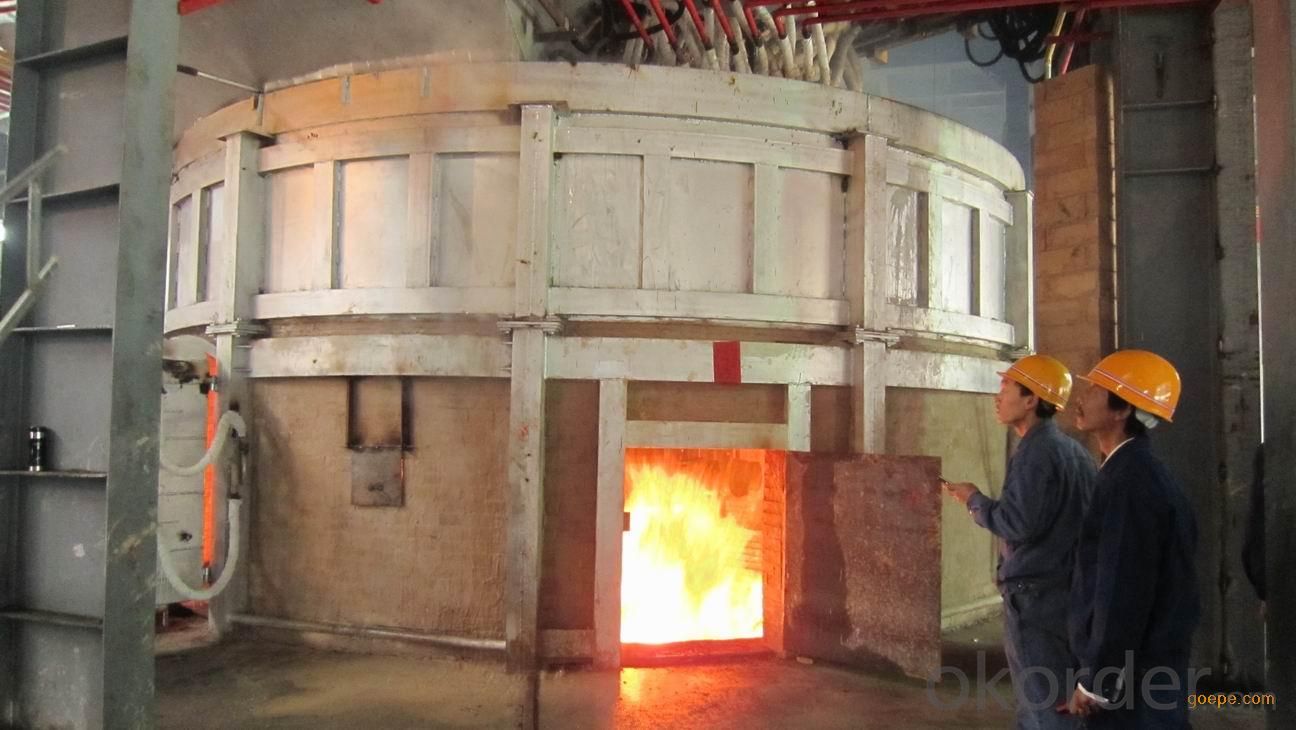
Main application of Silicon-manganese alloy
Siliconmanganese is a kind of alloy that consists of silicon, manganese, iron and few carbon or some other elements, it’s a ferrous alloy which is used widely and high production capacity. Its consumption is in second of ferroalloy production. The manganese and silicon in silicon-manganese have strong oxygen affinity, using the silicon-manganese in smelting steel, will produce MnSiO3 and MnSiO4, their melting point are 12700C and 1327 0C respectively, which has the advantages of low melting point, big granule, easy to float up, good deoxidizing effect and so on.
In the same condition, using manganese or silicon to deoxidize separately, the burn out rate are 46% and 37%, but it is only 29% if using manganese alloy to deoxidize. So, it is used widely to smelting steel and its output increases faster than ferroalloy’s, so has become an indispensable composite deoxidizing and alloy additives in steel industry. The silicon-manganese which contains carbon below 1.9% still is used to produce medium/low-carbon ferromanganese and semi-finished products of electro silicothermic process manganese metal.
In the ferroalloy production enterprises, they called the silicon-manganese for steelmaking as commercial silicon-manganese, the silicon-manganese for medium/low-carbon ferromanganese as self-use silicon-manganese and the silicon-manganese for making manganese metal as high silicon-manganese.

Silicon-manganese alloy --Grade & Chemical composition
| Chemical Composition (%) | ||||||
Mn | Si | C | P | S | |||
Ⅰ | Ⅱ | Ⅲ | |||||
≤ | |||||||
FeMn64Si27 | 60.0~67.0 | 25.0~28.0 | 0.5 | 0.1 | 0.15 | 0.25 | 0.04 |
FeMn67Si23 | 63.0~70.0 | 22.0~25.0 | 0.7 | 0.1 | 0.15 | 0.25 | 0.04 |
FeMn68Si22 | 65.0~72.0 | 20.0~23.0 | 1.2 | 0.1 | 0.15 | 0.25 | 0.04 |
FeMn64Si23 | 60.0~67.0 | 20.0~25.0 | 1.2 | 0.1 | 0.15 | 0.25 | 0.04 |
FeMn68Si18 | 65.0~72.0 | 17.0~22.0 | 1.8 | 0.1 | 0.15 | 0.25 | 0.04 |
FeMn64Si18 | 60.0~67.0 | 17.0~20.0 | 1.8 | 0.1 | 0.15 | 0.25 | 0.04 |
FeMn68Si16 | 65.0~72.0 | 14.0~17.0 | 2.5 | 0.1 | 0.15 | 0.25 | 0.04 |
FeMn64Si16 | 60.0~67.0 | 14.0~17.0 | 2.5 | 0.2 | 0.25 | 0.3 | 0.05 |
- Q:What is an industrial furnace pit?
- The creation and development of industrial kilns play an important role in the progress of mankind. Chinese appeared more perfect in the Shang Dynasty copper smelting furnace, furnace temperature is up to 1200 DEG C, up to 0.8 meters in diameter kiln stove.
- Q:Should the industrial furnace shell cool down?
- Normally, the furnace shell temperature of an industrial furnace is below 50 degrees, so there is no need to cool down.
- Q:What is the difference between industrial furnace masonry and ordinary masonry?
- Of course, the difference is like the difference between a hog cap and a 100 story building. See the industrial furnace manual.
- Q:Heat treatment equipment (industrial furnace), which products generally contain what kind of, which industries need to use heat treatment industrial furnace equipment.
- The main equipments of heat treatment are classified into two major categories: main equipment and auxiliary equipment. The main equipment includes heat treatment furnace, heating device, surface modification, surface oxidation device, surface mechanical enhancement device, cooling equipment, cold processing equipment, process parameter detection and control instrument; auxiliary equipment includes cleaning cleaning equipment, furnace atmosphere heating medium permeability meter preparation equipment, cooling device, quenching medium heavy transport machinery, quality testing equipment, power transmission line and auxiliary equipment, fire safety equipment, dust and other production fixture.
- Q:What are the advantages of a vacuum furnace?
- The utility model can completely eliminate the oxidation and decarburization of the workpiece surface in the heating process, and can obtain clean surfaces without deterioration layers. For cutting tools that grind only one side of grinding (such as twist grinding, the surface of the groove surface is exposed to the blade directly), the cutting performance is greatly improved.
- Q:Why does the burner of industrial furnace burn occasionally?
- The general process for burner ignition, blowing furnace, electric spark ignition, solenoid valve, open the gas in case of delayed spark ignition, detection device detects the flame, the controller accepts signal so that the solenoid valve open, gas continuous normal combustion. However, if the ignition fails or the burner fires, the detector cannot detect the flame, which causes the solenoid valve to close and the burner flameout.
- Q:What are the companies in the world that are currently engaged in metallurgical furnaces?
- Each manufacturer has its own industry and technological advantages.If you say that the performance rankings, turnover, and so on, it seems that no one has done this ranking.
- Q:Brief introduction to repair of industrial furnace
- The industrial furnace is the main production equipment in the machinery industry. The repair of industrial furnace directly affects the quality, high yield, long life, low consumption and safe production of the furnace.
- Q:What is industrial furnace masonry?
- Before masonry construction, the pre process and parts that may affect the quality of masonry work shall be re tested,masonry construction shall be carried out according to the datum central line and the datum elevation.
- Q:How many kinds of industrial electric furnaces are there?
- Industrial furnace according to the heating mode is divided into two categories: one is the fuel furnace, combustion heat with solid, liquid or gaseous fuel in the furnace for heating the workpiece; the second is in the furnace, the furnace converts electrical energy to heat the heat.
1. Manufacturer Overview |
|
|---|---|
| Location | |
| Year Established | |
| Annual Output Value | |
| Main Markets | |
| Company Certifications | |
2. Manufacturer Certificates |
|
|---|---|
| a) Certification Name | |
| Range | |
| Reference | |
| Validity Period | |
3. Manufacturer Capability |
|
|---|---|
| a)Trade Capacity | |
| Nearest Port | |
| Export Percentage | |
| No.of Employees in Trade Department | |
| Language Spoken: | |
| b)Factory Information | |
| Factory Size: | |
| No. of Production Lines | |
| Contract Manufacturing | |
| Product Price Range | |
Send your message to us
Silicon-manganese Furnace
- Loading Port:
- China Main Port
- Payment Terms:
- TT OR LC
- Min Order Qty:
- -
- Supply Capability:
- -
OKorder Service Pledge
OKorder Financial Service
Similar products
New products
Hot products
Related keywords
